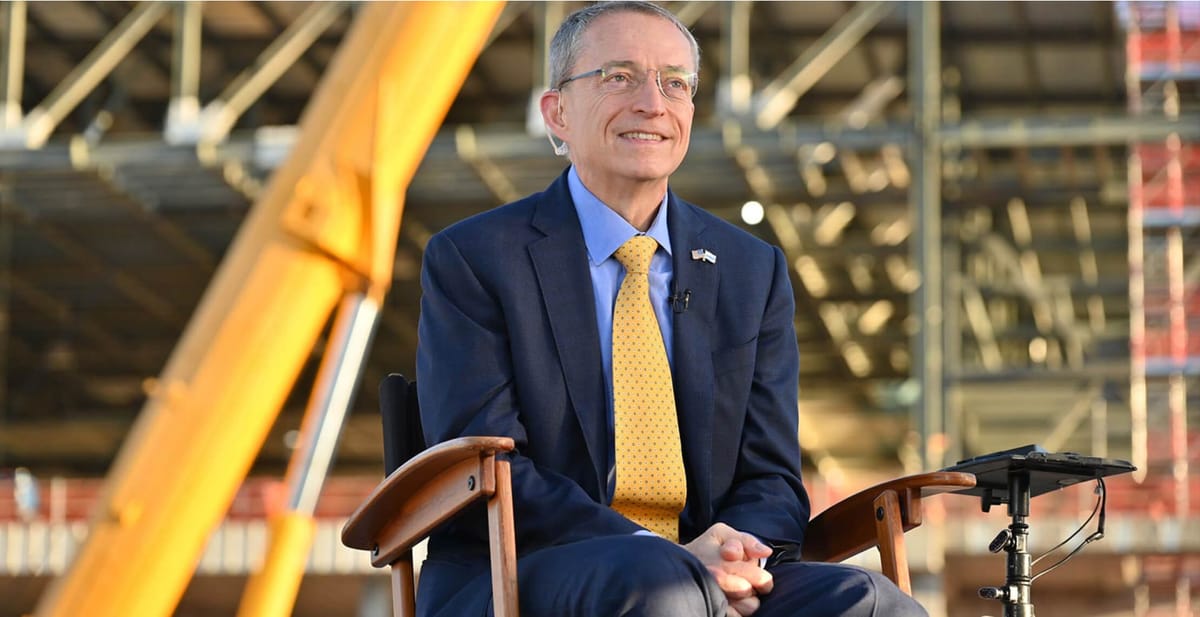
Pat Gelsinger has retired as CEO of Intel, effective December 1, after a nearly four-year tenure marked by ambitious plans but declining market position.
The immediate impact: Intel's stock rose 5% in pre-market trading as investors responded to the leadership shake-up. The company named CFO David Zinsner and Intel Products CEO Michelle Johnston Holthaus as interim co-CEOs.
The numbers tell the story. Intel's revenue fell to $54 billion in 2023, down a third since Gelsinger took over. Last month, the company reported a $16.6 billion quarterly loss – the largest in its history. Analysts expect Intel's first annual net loss since 1986.
Behind the change: Gelsinger's bold transformation strategy struggled to deliver results. His plan to compete with chip manufacturing leaders TSMC and Samsung through massive factory investments strained Intel's finances. The company's push into AI chips failed to match NVIDIA's dominance, while core businesses lost ground to competitors.
Interestingly, Gelsinger's departure comes just a week after Intel secured a $7.86 billion CHIPS Act grant for U.S. manufacturing expansion. The company also recently moved to separate its foundry business into an independent subsidiary.
Key setbacks under Gelsinger included:
- A failed $5.4 billion acquisition of Tower Semiconductor
- Technical issues with the crucial 18A manufacturing process
- Lost opportunities with major customers like Apple and Sony
- A 52% stock price decline this year alone
The big picture: Gelsinger’s return to Intel was framed as a potential salvation for the iconic company, but he inherited structural issues too large to quickly overcome. Industry analysts were hopeful when Gelsinger, a former Intel engineer and its first-ever Chief Technology Officer, rejoined from his previous position as CEO of VMware. He spearheaded initiatives aimed at revamping Intel’s foundry business and forging a path back to manufacturing leadership. However, even with significant government backing and ambitious expansions, Intel struggled to regain its footing against NVIDIA and AMD.
Gelsinger also leaned heavily into Intel’s relationship with the U.S. government, securing a contract to produce secure chips for the Department of Defense. But investor enthusiasm waned as Intel’s spending grew more aggressive. The AI revolution buoyed other semiconductor companies, while Intel's own attempts to capture AI market share fell flat—leading to more investor skepticism and the loss of significant market capitalization.
What's next: Frank Yeary, Intel’s independent chair of the board, will serve as interim executive chair and lead the search for a permanent CEO. Yeary acknowledged Gelsinger's contributions and emphasized the priority of "restoring investor confidence" while maintaining Intel's manufacturing transformation. The company faces critical decisions about its foundry strategy, with reports of potential interest from Qualcomm in a takeover.
The human story: Gelsinger's departure marks the end of a remarkable Intel career that began when he joined as an 18-year-old technician. He rose to become the company's first CTO before leaving in 2009, then returned as CEO in 2021 with hopes of engineering a turnaround.
In a farewell statement, Gelsinger said, "Leading Intel has been the honor of my lifetime. Today is bittersweet, as this company has been my life for the bulk of my career. I look back with pride at all we accomplished, even though it's been a challenging year." His words resonate as a reflection of both dedication and the harsh realities of Intel’s current predicament.
The bottom line: Intel's next leader faces the daunting task of modernizing a semiconductor giant while competing in the AI era. The company's transition from PC-era champion to modern chip manufacturer remains a work in progress, with investor patience wearing thin.

